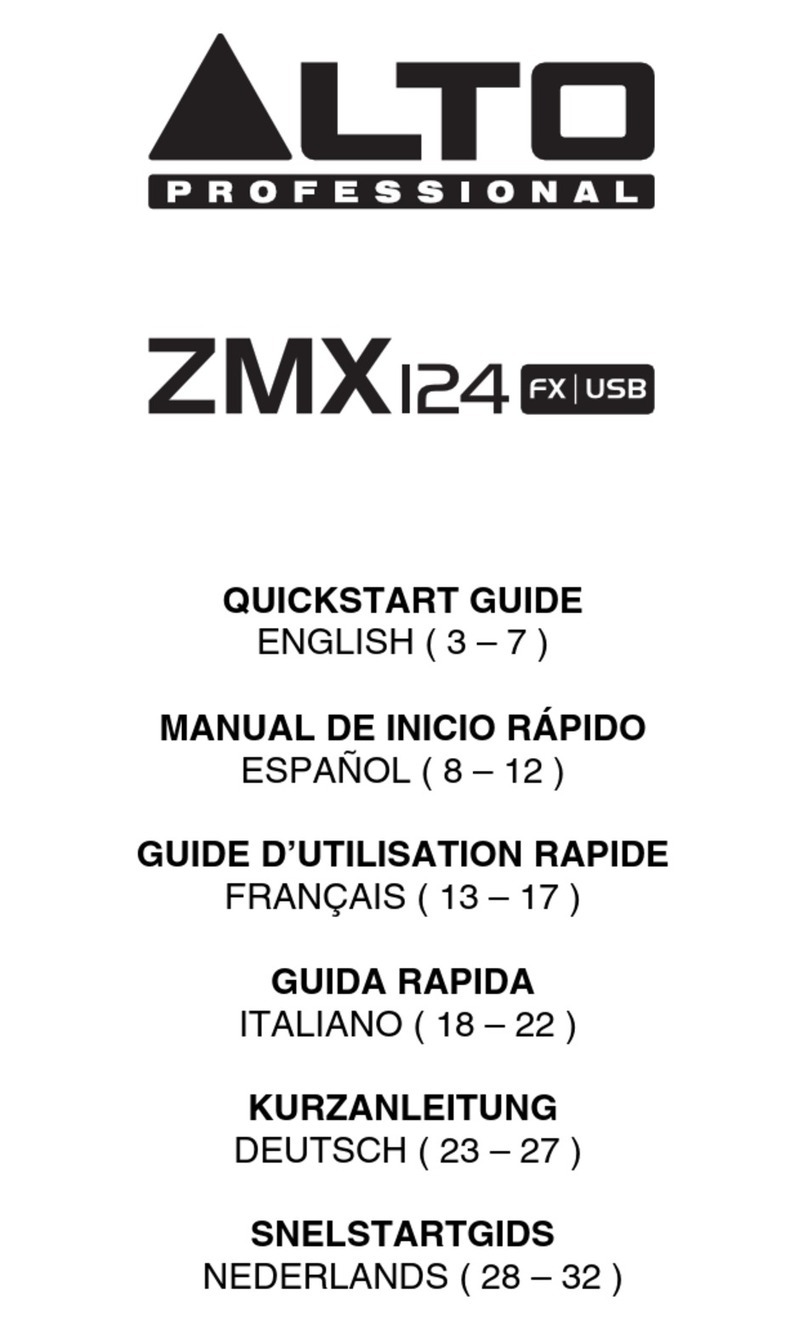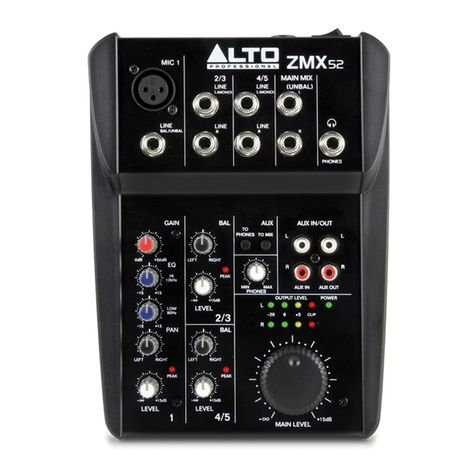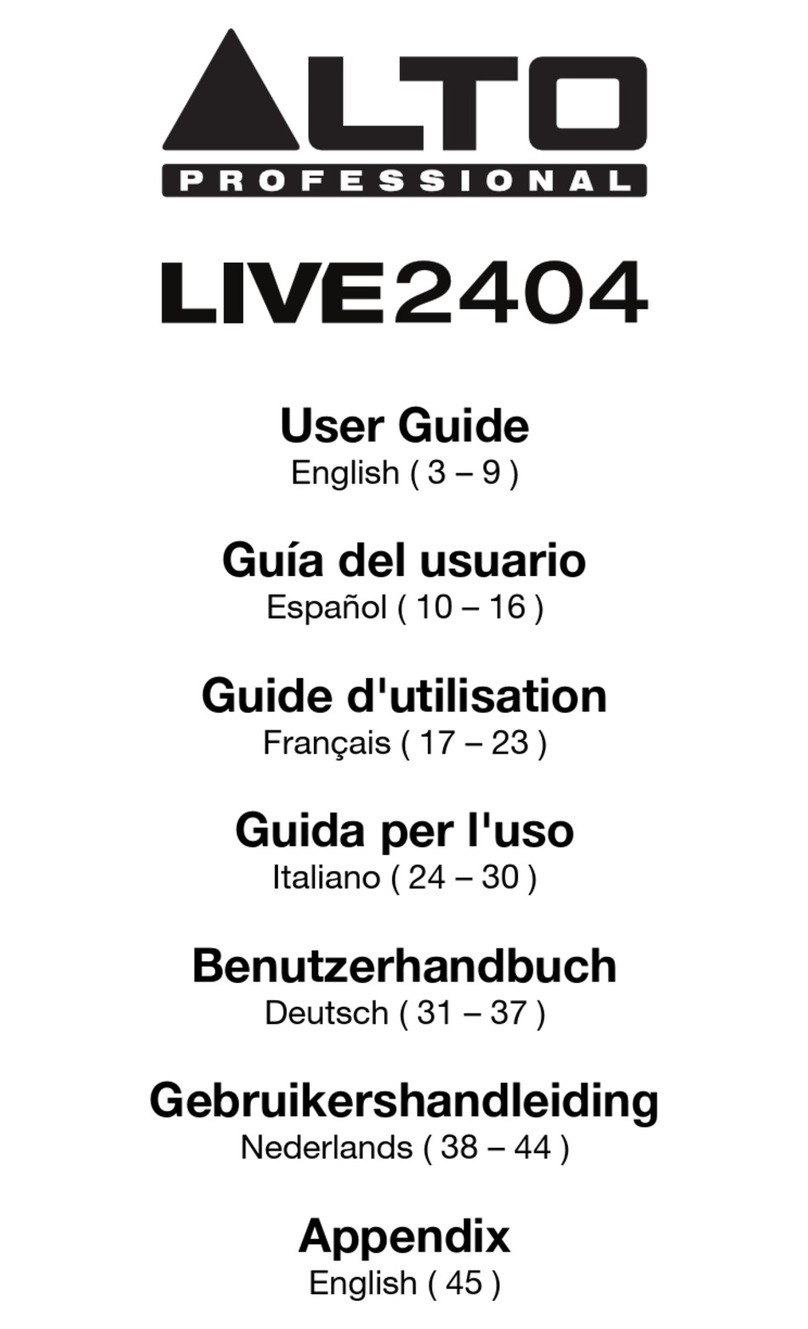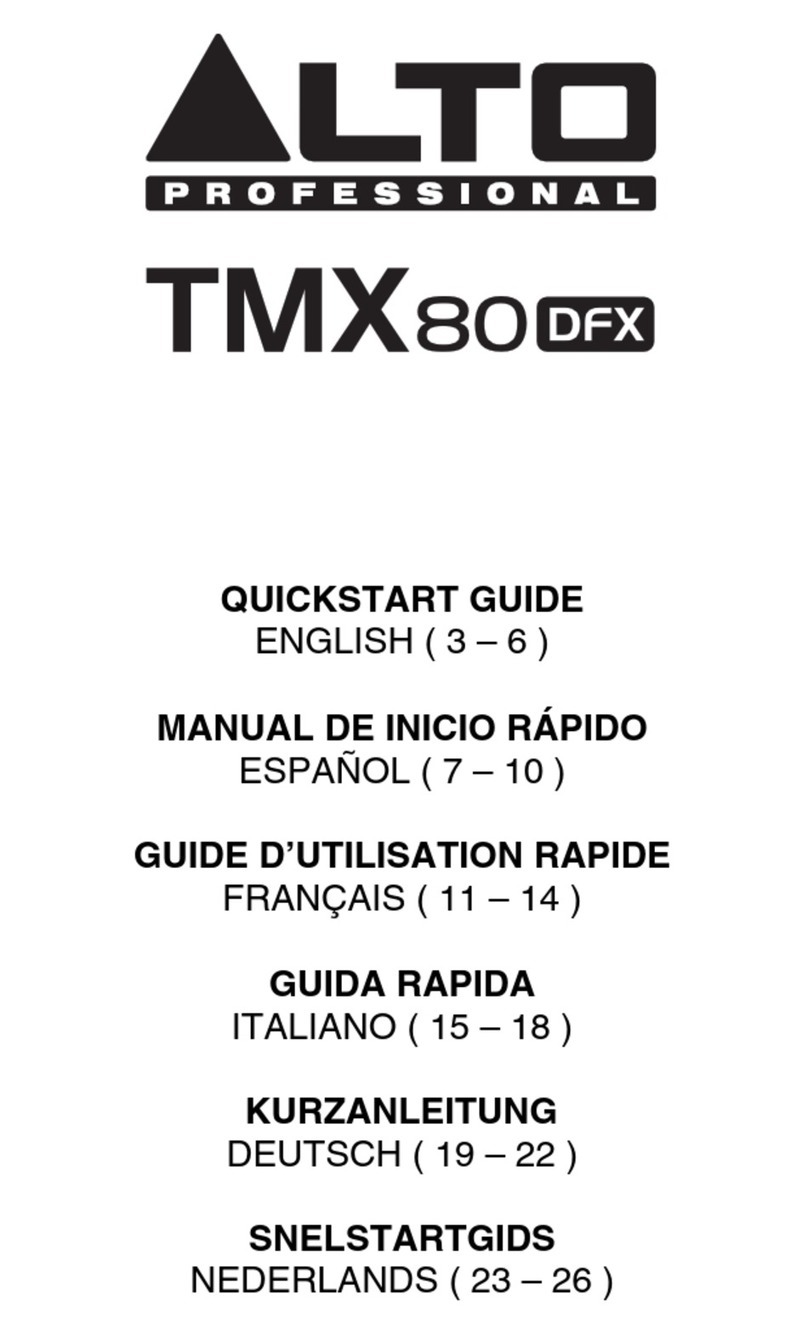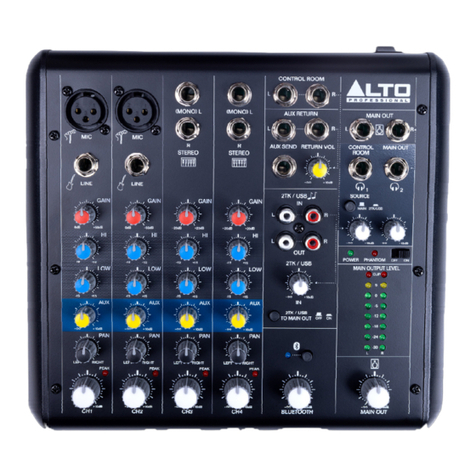
6
31
30
38
19
20
18
18
19
21
21
22 23
24 25
26 27
28
29
39
39 42
43
44
44
44
44
45
46
23
32
32
32
32
33
33
33
33
34
34
34
34
35
35
36
37
37 37
39
39
39
39
39
39
40 40 40 40 41
47
18. 2-TRACK INPUTS – You may connect these
inputs to the outputs of an external sound source
using a standard stereo RCA cable (sold
separately). You can send this channel to the
Solo Channel (using the CTRL ROOM SOURCE
"2 TK IN" switch) and/or the main mix (using the
2TK TO MIX switch).
19. 2-TRACK OUTPUTS – Connect these outputs to
the inputs of an external recording device using
a standard stereo RCA cable (sold separately).
20. LAMP – Connect a gooseneck lamp (12 V, 0.5
A, not included) to this BNC connector.
21. PHONES OUTPUT – Connect 1/4" stereo
headphones to these outputs. The PHONES
VOLUME knob controls the volume.
22. EFFECTS OUT VOLUME – Adjusts the volume
of the audio sent out of the DFX OUT from the
mixer's effects processor.
23. AUX 1/2 – Adjusts the level of the audio sent
from the effects processor out AUX SENDS 1
and 2.
24. EFFECTS SELECTOR – Selects the effect that
the mixer's internal effects processor will apply to
the various channels. Each channel can send
different levels of audio to the processor by
adjusting their FX POST SEND knobs. See the
EFFECTS section for an explanation of the
available effects.
25. VARIATIONS SELECTOR – Selects the amount
of the effect applied to the various channels.
26. FX MUTE – Press this button to mute/unmute
the effects.
27. FX PEAK LED – The LED will flash if the signal
is clipping. If this happens, decrease the setting
of the EFFECTS OUT knob. When the effects
processor is muted, the LED will be solidly lit.
28. POWER LED – Illuminates when the mixer is on.
29. PHANTOM POWER LED – Illuminates when the
PHANTOM POWER switch is on.
30. EQ ON/OFF – Enables or disables the
GRAPHIC EQUALIZER.
31. GRAPHIC EQUALIZER – When the EQ
ON/OFF switch is on (depressed), you can use
these controls to adjust the equalization of the
main mix.
32. AUX SENDS VOLUME – Controls the audio
level sent out the AUX SENDS.
33. AUX SENDS SOLO – When this button is
depressed, the audio signal being sent to the
AUX SENDS will also be routed to the Solo
Channel, which will become the only audio sent
to the PHONES OUTPUTS and CTRL OUTS.
The LED METERS will also display the audio
levels, which are controlled by the PHONES and
CTRL ROOM volume knobs.
34. AUX RTN VOLUME – Controls the audio level sent into the AUX RTN inputs.
35. AUX RTN TO AUX SEND VOLUME – Controls the audio level sent from the AUX RTN inputs back into the
Aux Channel.
36. AUX RTN 3 ROUTING SWITCH – Selects whether the AUX RTN 3 audio is routed to the CTRL ROOM mix
(when the button is depressed) or the main mix (when the button is raised).
37. AUX RTN 4 ROUTING SWITCHES – When these buttons are depressed, the AUX RTN 4 audio will be routed
to Subgroup 1 and 2, Subgroup 3 and 4, and/or the main mix.
38. AUX RTN SOLO – When this button is depressed, all AUX RTN audio will be heard in the Solo Channel, which
will become the only audio sent to the PHONES OUTPUTS and CTRL OUTS. The LED METERS will also
display the audio levels, which are controlled by the PHONES and CTRL ROOM volume knobs.
39. SUBGROUPS ASSIGN TO MAIN – Use these buttons to assign each subgroup's left and right channels to the
main mix. When a button is pressed, that channel is being routed to the main mix.
